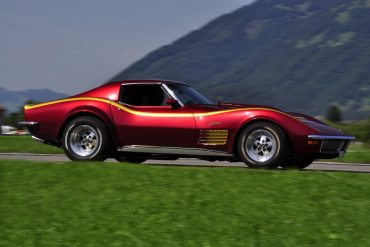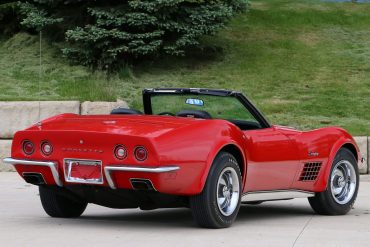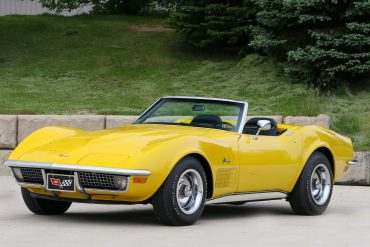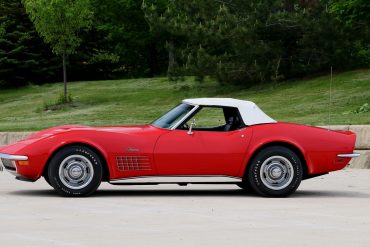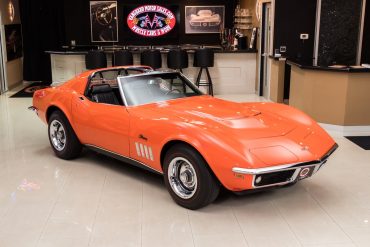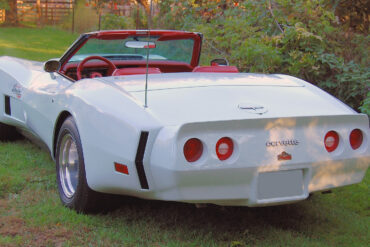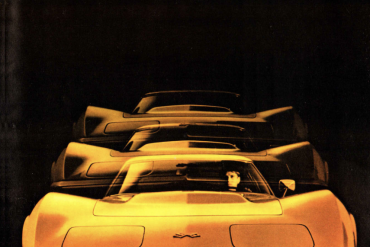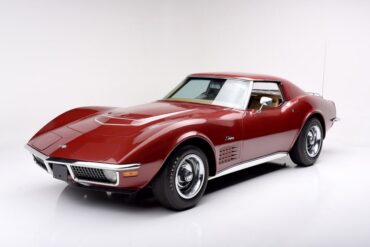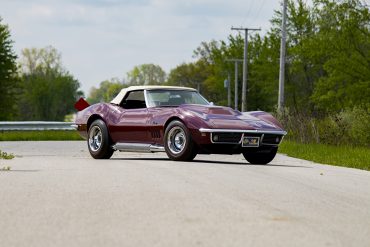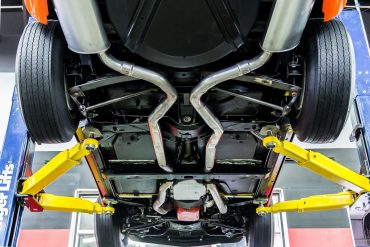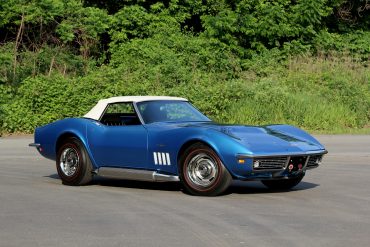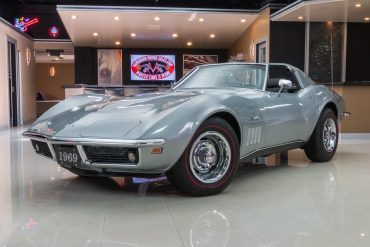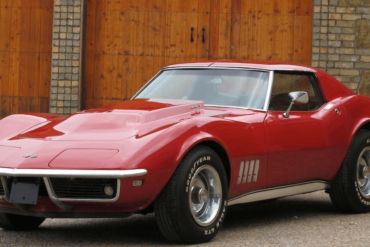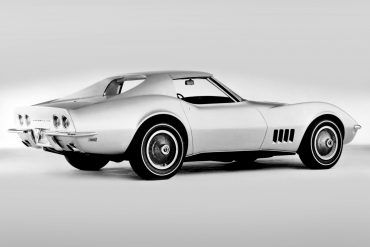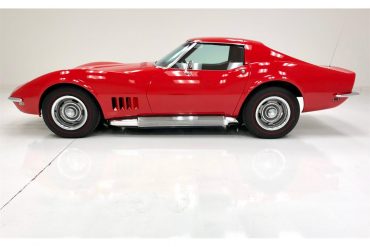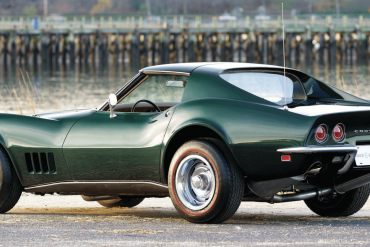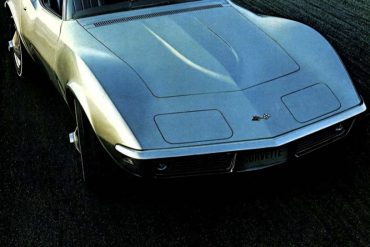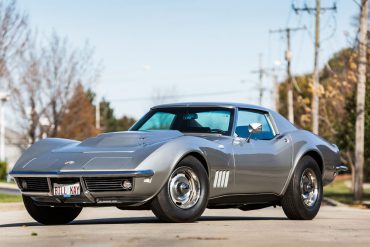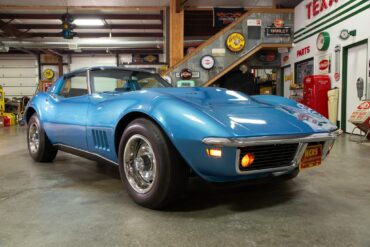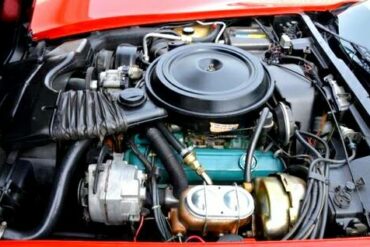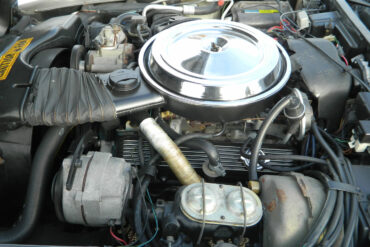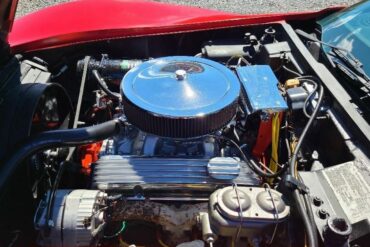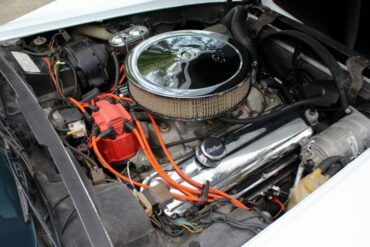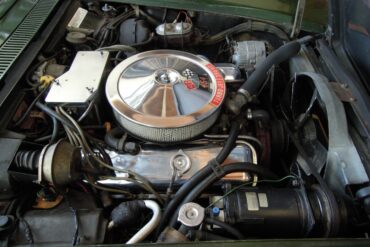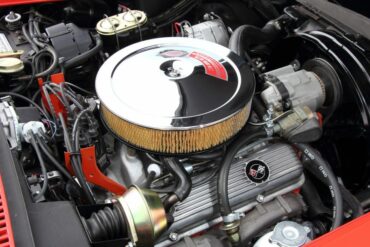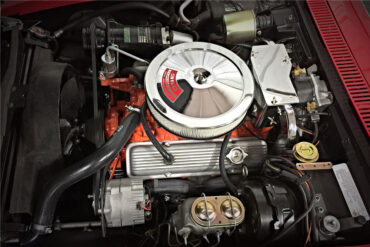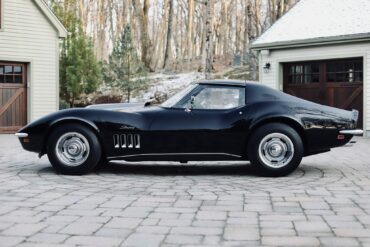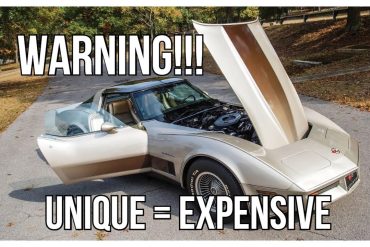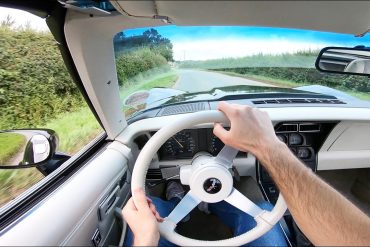The following list of common issues is intended for individual reference only, and may not reflect the specific issues of every 1970 Corvette.
Looking for information on how to maintain your 1970 Corvette? We've curated resources to help you keep your Corvette in great shape for years to come!
We've scoured the web to curate the factory pricing, options, and interior/exterior color options for the 1970 Chevrolet Corvette.
See the complete technical specifications and performance information for the 1970 Chevrolet Corvette, including engine specs, acceleration, & quarter mile.
Our team has scoured the web to find some great videos of the 1969 Chevrolet Corvette.
The Duntov Turbo was built as a partnership between American Custom Industries (ACI), a company known for building replacement Corvette body panels, and Zora Arkus-Duntov. It was developed as a highly-stylized convertible sports car based on the production model Corvette. Each of the special Duntov Turbo's also came with a turbocharged V8.
Download this 1969 Corvette Dealers Sales Brochure for a quick look at the features of the car. No need to be aware of any substitutes. There aren't any. There is no mistaking a Corvette for anything but a Corvette. The aerodynamic links of America's original sports car...
For all 1969 Corvettes, the location of the Vehicle Identification Number (VIN) is stamped on a plate attached to the left front body hinge pillar. (See Figure 1 below.)
We've scoured the web to curate the factory pricing, options, and interior/exterior color options for the 1969 Chevrolet Corvette.
The following list of common issues is intended for individual reference only, and may not reflect the specific issues of every 1969 Corvette.
Looking for information on how to maintain your 1969 Corvette? We've curated resources to help you keep your Corvette in great shape for years to come!
See the complete technical specifications and performance information for the 1969 Chevrolet Corvette, including engine specs, acceleration, & quarter mile.
Our team has scoured the web to find some great videos of the 1968 Chevrolet Corvette.
For all 1968 Corvettes, the location of the Vehicle Identification Number (VIN), body style, body number trim, and paint combination can be found on the instrument panel brace under the glove box.
We've scoured the web to curate the factory pricing, options, and interior/exterior color options for the 1968 Chevrolet Corvette.
The following list of common issues is intended for individual reference only, and may not reflect the specific issues of every 1968 Corvette.
Download this 1968 Corvette Dealers Sales Brochure for a quick look at the features of the car. Go hardtop! The Corvette Sting Ray is for those who appreciate the true sports kind of car - and even for those who don't right now. Its' that special kind of automobile that comes along....
Looking for information on how to maintain your 1968 Corvette? We've curated resources to help you keep your Corvette in great shape for years to come!
See the complete technical specifications and performance information for the 1968 Chevrolet Corvette, including engine specs, acceleration, & quarter mile.
There are just 3 hours left on this beautifully refurbished 1968 Chevrolet Corvette L88 4-Speed on BringATrailer. This is one...
GM found itself facing a critical question of sorts. Should the industry giant forgo the sale of Corvettes in California during 1980 or attempt to rectify a troubling situation. In the end, buyers in California would be able to purchase a Corvette, albeit with a variation of the same engine that was offered in Chevrolet’s passenger cars of that era, the 305 cubic-inch V8.
During many production years, consumers were provided with multiple engine options to choose from. This was especially true during the late 1960s. However, by the late 1970s, GM had begun to significantly scale back the number of production engines offered for the Corvette. This trend peaked in 1981, when only one engine, known as the L81, was offered to buyers.
Finally, in 1973, consumers were left with only three available engine options, two of which were of a small-blocks. The third was the 454 cubic-inch LS4, would only survive for two years, serving as the final big-block to grace the Corvette’s engine bay. By 1975, the Corvette was only offered with one of two engines, of which, the 350 cubic-inch L82 was the most formidable.
Was the 454 cubic-inch LS4 one of General Motors’ most powerful big-blocks? Absolutely not. However, it is historically significant nonetheless. The LS4 served as the end of the road for the big-block Corvette, as America’s sports car returned to its small-block roots. Today, many collectors seek out LS4 equipped Corvettes.
General Motors sought out any means of retaining the Corvette’s performance acuity. This desire ultimately gave rise to the company's illustrious LS5 454 cubic-inch big-block. The 454ci LS5 is remembered as one of the final GM big-block offerings to have come out in the 60’s and 70’s.
The LT-1 served as a revised version of GM’s famed 350 cubic-inch platform, and is often heralded as one of the manufacturer’s most beloved small-block powerplants. Though quite legendary in status, the LT-1 was rather obscure and short-lived during its production run, only produced for three years (1970-1972).
The 350ci V8 was actually a further extension of GM’s decade-old small-block engine series. In a bid to further cement the Corvette’s performance legacy, subsequent modifications to these earlier engines were made, thereby giving birth to one illustrious platform. It would serve as a mainstay of the Corvette line for over three decades to come.
Up for sale is one of the holiest of grails in the Corvette world. This numbers-matching 1969 427ci L88, was...
What To Look For When Buying...


